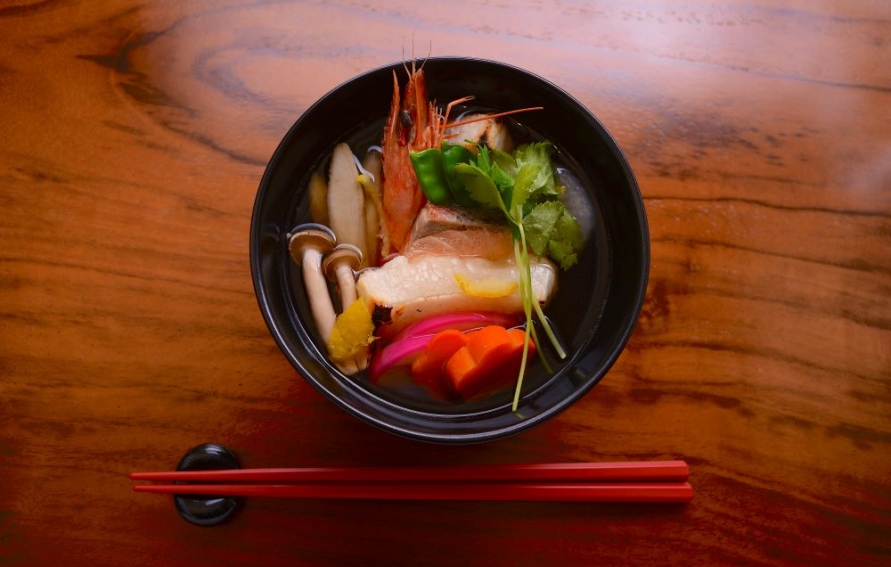Ingredients
- 4 cups water
- 1 (4- by 2-inch) strip of kombu
- 1 cup bonito flakes, loosely packed (leave out to make vegan dashi)
- 3 cups dashi (recipe at left)
- ½ cup daikon radish, thin slices
- ½ cup carrot, thin slices
- 8 slices kamaboko (Japanese fish cake)
- 8 mochi
- 1 tablespoon soy sauce
- 1 tablespoon sake
- ¼ – ½ teaspoon salt
- 8 snow peas, blanched
- ½ cup whole mushrooms (shiitake, shimeji or oyster)
- 4 mitsuba (wild Japanese parsley), coarsely chopped (or chopped green onlio)
- 4 shrimp, cooked
- 4 ounces (4 slices) salmon, cooked
- ½ cup thinly sliced salsify (a root veggie sometimes known as scorzonera)
Preparation
Dashi (fish broth)
Put water and kombu in saucepan. Heat to just before boiling. Remove kombu. Add bonito flakes and boil for 2–3 minutes. Remove from heat. Strain broth through cheesecloth. Use immediately or store in the refrigerator for up to 1 week.
Ozoni*
Heat dashi in a pot over medium flame and add daikon radish, carrot and kamaboko. Cook until vegetables become tender.
Meanwhile, bake mochi in a toaster oven at 400° for about 5 minutes, until the mochi has expanded and browned.
Season soup with soy sauce, sake and salt.
To serve, place baked mochi in soup bowl and pour in hot soup. Add snow peas, mushrooms and any optional additions. Sprinkle with mitsuba or green onion to garnish.
*Most ingredients can be found at Whole Foods and your local Asian grocery store.



